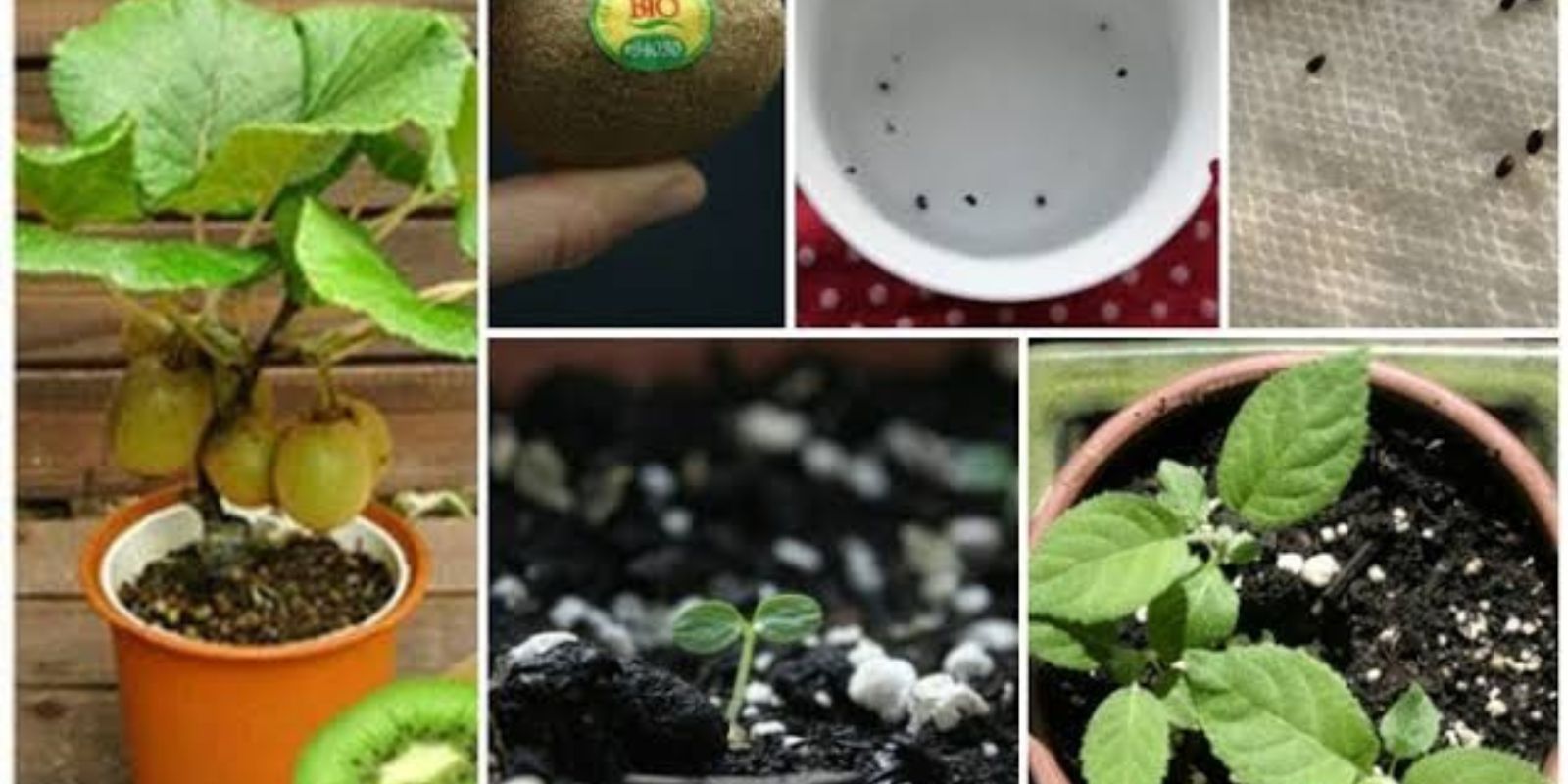Kiwi fruit, with its vibrant green flesh and refreshing taste, is a favorite in many households. What if you could enjoy the satisfaction of harvesting this nutritious fruit right from your backyard or balcony? Growing kiwi plants from store-bought kiwis in containers is not only possible but also incredibly rewarding. This guide will take you through every step, from selecting the right materials to enjoying your first homegrown kiwis.
Why Grow Kiwi Plants at Home?
Growing kiwi plants at home has many advantages. For urban gardeners or those with limited space, container gardening offers a practical solution. Kiwi plants are visually appealing, with lush green vines that can transform your balcony or garden into a mini orchard. Additionally, cultivating your own kiwi fruit allows you to enjoy fresher, chemical-free produce while reducing your environmental impact.
1. Selecting the Right Container
Kiwi plants require ample space for root growth, so start with a container that’s at least 18 inches deep and wide. Ensure it has multiple drainage holes to prevent waterlogging, which can lead to root rot. A sturdy container is essential, as kiwi vines grow vigorously and may become heavy over time.
2. Choosing the Right Kiwi Variety
Not all kiwi plants are suitable for container gardening. Look for hardy or self-pollinating varieties such as:
- Jenny Kiwi: A self-pollinating variety ideal for small spaces.
- Hardy Kiwi (Actinidia arguta): Known for its compact growth and smaller, sweeter fruits.
If you opt for a non-self-pollinating variety, you’ll need both a male and a female plant for fruit production. However, self-pollinating varieties are more practical for beginners or container gardeners.
3. Preparing the Soil and Fertilizer
Kiwi plants thrive in nutrient-rich, well-draining soil. Create a mix using equal parts potting soil, compost, and sand to ensure proper aeration and drainage.
- Fertilizer Tips: Feed your kiwi plant with a balanced fertilizer (10-10-10 NPK) every month during the growing season. Avoid over-fertilizing, as it can result in excessive foliage growth at the expense of fruit production.
4. Planting Kiwi Seeds or Corms
If you’re growing from seeds extracted from a store-bought kiwi:
- Scoop out the seeds and rinse them thoroughly to remove the pulp.
- Place the seeds on a damp paper towel, fold it, and seal it in a plastic bag.
- Keep the bag in a warm, sunny spot until the seeds sprout.
- Once sprouted, transfer them to small pots with well-draining soil before moving them to larger containers.
Alternatively, purchase kiwi corms from a nursery for faster results and better reliability.
5. Providing Optimal Sunlight and Temperature
Kiwi plants need full sun to thrive—at least 6-8 hours of direct sunlight daily. Position your container in a sunny spot, such as a south-facing balcony or patio.
- Temperature Tips: Protect kiwi plants from extreme weather conditions. Use shade cloths during heatwaves and move containers indoors during frost or severe cold.
6. Watering and Maintaining Humidity
Kiwi plants prefer consistently moist soil but dislike waterlogged conditions.
- Water your plant thoroughly, allowing excess water to drain out completely.
- Reduce watering during the dormant winter months.
- For indoor plants, maintain moderate humidity levels by misting occasionally.
7. Supporting Kiwi Vines: Training and Pruning
Kiwi vines require sturdy support structures such as trellises, arbors, or poles. Training the vines ensures healthy growth and makes harvesting easier.
- Guide the main stem up the support structure, securing it with soft ties.
- Prune the vines regularly to remove dead or overcrowded branches, encouraging airflow and fruit production.
8. Pollination: Ensuring Fruit Production
Pollination is crucial for kiwi plants to bear fruit.
- Self-Pollinating Varieties: These do not require external help, making them ideal for beginners.
- Other Varieties: Hand-pollination may be necessary. Use a soft brush to transfer pollen from male flowers to female flowers during the blooming season.
9. Harvesting Kiwi Fruits
Kiwi fruits typically ripen in late fall. Here’s how to identify ripe fruits:
- Gently squeeze the fruit—it should feel slightly soft but not mushy.
- Pick the fruit carefully, leaving the stems intact to avoid damaging the plant.
For the best flavor, allow the harvested kiwis to ripen further at room temperature before consumption.
10. Managing Pests and Diseases
Common pests like aphids, spider mites, and scale insects can affect kiwi plants.
- Use organic insecticidal soap or neem oil to keep pests at bay.
- Prevent diseases like root rot by ensuring proper drainage and avoiding overwatering.
- Regularly inspect the plant for signs of distress and take immediate action to address any issues.
Benefits of Growing Kiwi Plants at Home
Growing kiwi plants at home is not just a hobby but an investment in your health and well-being. Homegrown kiwis are richer in nutrients and free from harmful pesticides. Additionally, the joy of nurturing a plant from seed to fruit is immensely rewarding.
Challenges and Solutions
While kiwi plants are relatively easy to grow, beginners may face challenges such as:
- Slow Growth: Kiwi plants take 3-5 years to produce fruit. Be patient and focus on maintaining healthy growth.
- Limited Space: Use vertical gardening techniques or compact varieties to optimize space.
- Weather Sensitivity: Protect the plants from frost and extreme heat using movable containers or insulation.
Final Thoughts: A Rewarding Journey
Growing kiwi plants in containers is a journey of patience and dedication. Whether you’re an experienced gardener or a beginner, the process of nurturing a plant and enjoying its fruits is deeply satisfying. With the steps outlined above, you’re well-equipped to start your kiwi-growing adventure.
Join the Green Revolution!
🌿 Have you tried growing kiwi plants at home? Share your experiences, tips, or questions in the comments below! Let’s inspire more people to enjoy the joy of homegrown fruits.
#GrowYourOwn #KiwiPlant #UrbanGardening #ContainerGardening #GardeningTips #HomegrownFruits #GreenLiving #SustainableGardening
4o

